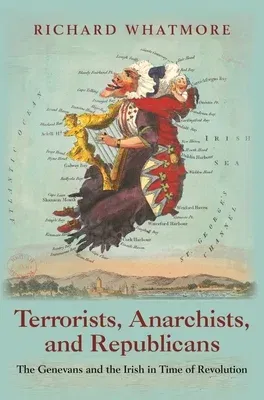A bloody episode that epitomised the political dilemmas of the
eighteenth century
In 1798, members of the United Irishmen were massacred by the British
amid the crumbling walls of a half-built town near Waterford in Ireland.
Many of the Irish were republicans inspired by the French Revolution,
and the site of their demise was known as Geneva Barracks. The Barracks
were the remnants of an experimental community called New Geneva, a
settlement of Calvinist republican rebels who fled the continent in
1782. The British believed that the rectitude and industriousness of
these imported revolutionaries would have a positive effect on the Irish
populace. The experiment was abandoned, however, after the Calvinists
demanded greater independence and more state money for their project.
Terrorists, Anarchists, and Republicans tells the story of a utopian
city inspired by a spirit of liberty and republican values being turned
into a place where republicans who had fought for liberty were
extinguished by the might of empire.
Richard Whatmore brings to life a violent age in which powerful states
like Britain and France intervened in the affairs of smaller, weaker
countries, justifying their actions on the grounds that they were
stopping anarchists and terrorists from destroying society, religion and
government. The Genevans and the Irish rebels, in turn, saw themselves
as advocates of republican virtue, willing to sacrifice themselves for
liberty, rights and the public good. Terrorists, Anarchists, and
Republicans shows how the massacre at Geneva Barracks marked an end to
the old Europe of diverse political forms, and the ascendancy of
powerful states seeking empire and markets--in many respects the end of
enlightenment itself.

